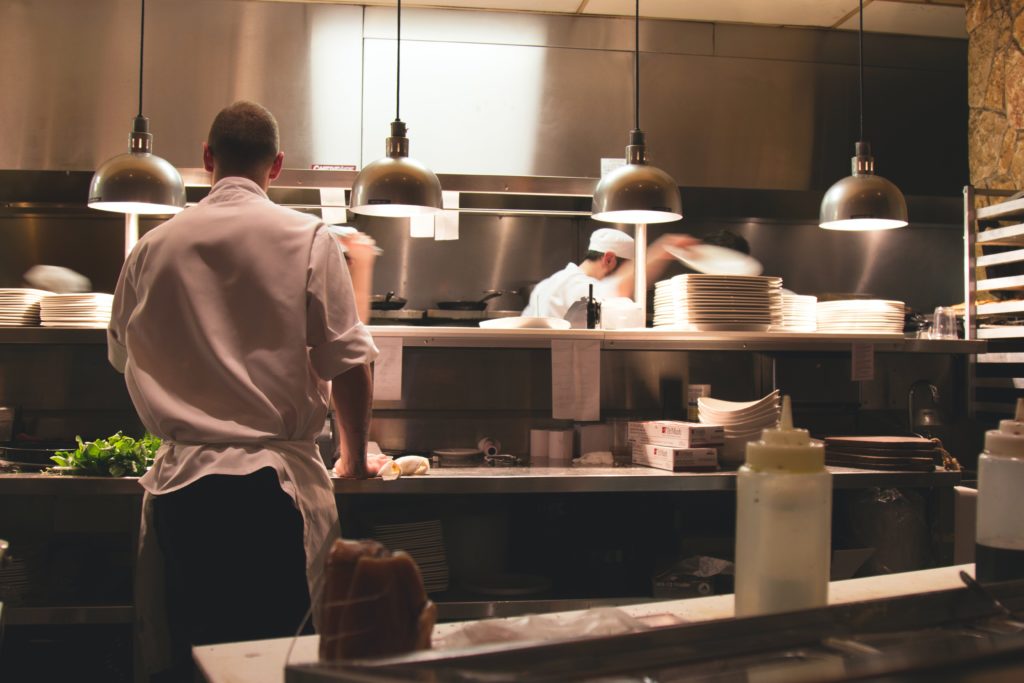No matter you’ve just started a small burger joint in a tiny town or are running a fine dining downtown restaurant in a bustling street in a large city, you should always be on the lookout for ways to secure your position in this highly competitive business.
Every day, more and more people eat out or use food delivery services.
Yes, this means bigger opportunities for growth, but it also means the sprouting up of new competitors.
If you’re at the beginning of your business, they may not allow you to gain a foothold in the first place, and if you’ve already made a name for yourself, they may steal your customers.
In either case, you need real competitive advantages to survive or flourish.
Gaining a competitive advantage in the restaurant industry requires a thorough analysis of the demographics of the target area.
It also entails keeping a close watch on the developments of the market, existing competitors, food trends, and more.
If you are looking for ways to get competitive advantages for your restaurant business, this article is for you.
What is a competitive advantage in the restaurant industry?
Competitive advantage is an attribute, quality, or aspect of a restaurant’s products, services, or environment that makes it a preferred choice for people when compared to other options (competitors), that is other restaurants.
In fact, your competitive advantage is the reason your customers choose to at your restaurant not the other restaurant down the street.
The competitive advantage of a restaurant is achieved by paying attention to at least one of these factors
- Quality
- Prices
- Menu selection
- Hospitality and service
- Design and ambiance
- Cleanliness
Improving each of these aspects helps a restaurant get a competitive advantage over rivals.
Failing to offer something special in these aspects means no chance of being chosen.
Tips for getting a competitive advantage for your restaurant
If you’re beginning a restaurant business, follow these steps.
1. Identify areas where there are few restaurants offering foods similar to yours, and choose one.
For example, opening an Italian restaurant in a neighborhood already filled with Italian restaurants wouldn’t be a good idea for sure.
Instead, the same area may lack a remarkable Chinese restaurant, creating an opportunity for those who want to open a restaurant serving Chinese cuisine.
2. Analyze the consumer base of the area to see if the people living or working there can be potential customers.
For instance, a restaurant serving pork dishes and alcoholic beverages in a Muslim-majority neighborhood isn’t going to do well.
The same goes for a family restaurant in an area where office complexes outnumber residential ones.
It goes without saying that opening a halal restaurant in a neighborhood with a large Muslim community or a family restaurant in an overwhelmingly residential area means more potential clients, particularly if there are currently few competitors operating there.
3. Analyze the local competitors after choosing your location.
There are probably competitors with the same target market as yours.
Other restaurants in the area are direct rivals but you should also look at convenience stores, supermarkets, and other businesses selling prepared foods as indirect rivals.
4. Discover the strengths and weaknesses of the competitors.
Here is an example of competitive advantage for a restaurant: A restaurant is well-known for its cordon bleu chefs who are excellent at cooking in a certain style, or its romantic ambiance.
These are two competitive advantages that make this restaurant stick out from the crowd.
The same restaurant’s prohibitive prices might discourage many to eat there regularly on the other hand, which is considered a weak point for it.
Another example: A fast-food restaurant might be popular for its quick services, making it a good place for people who want to grab a bite on the way home.
The downside of the restaurant is that it doesn’t offer home delivery services.
Incorporate as many of the strengths of your competitors as possible into your restaurant and try to eliminate the weaknesses they have in your business.
Well, this is almost impossible to have all the strengths and not have any imperfection at the same time, but you can create the most efficient version of your restaurant this way.
You may come up with interesting ideas for the interior and exterior design and ambiance that are new and inviting.
Offering attractive prices can draw many customers but be careful not to compromise the taste and quality of foods.
The above steps were for those who are starting their restaurant.
If you have been in the restaurant business for years, you still might be looking for competitive advantages or seeking out strategies to preserve or strengthen your current competitive advantage.
This is because you may be well aware that competitive advantage must be sustainable so that it could not be easily broken or copied by competitors.
For example, if your competitive advantage is only low prices, someone else might open a restaurant that offers lower prices or higher-quality foods at the same prices and steal your clients.
Here are what every restaurant owner should do to gain or retain their sustainable competitive edge over rivals.
5. Create your own culture
Your restaurant’s culture is the identity of your restaurant.
Just as no two people are exactly the same because each has a unique personality, your restaurant too should have something unique to offer that defines its identity.
Culture shapes the attitude of the entire restaurant because it is based on a cause, the main reason you started the restaurant.
When your reason for entering the restaurant industry isn’t merely financial, but a passion for making a difference in people’s lives through eating, creating enjoyable experiences for the customers becomes a cause for your restaurant that is promoted among the entire restaurant’s staff.
If this is instilled in the personnel, a positive image of your restaurant will be created in the minds of the guests.
So a unique culture is a good example of a sustainable competitive advantage for a restaurant.
6. Strive for professionalism
Before facing their plates, the guests of a restaurant encounter the employees.
They are the face of the restaurant who play a key role in the creation of a good connection between the guests and the restaurant.
People love to be respected and treated kindly.
They want to be received with friendly smiles when they step into a restaurant with their loved ones.
Not only do the staff need to be professional in their relations with the guests, but also they should be highly trained and proficient in their other duties.
Having highly skilled chefs, waiters/waitresses, expediters, and cashier are crucial in offering a smooth and positive experience of eating out to your clients.
The professionalism of a restaurant’s employees is, therefore, a competitive advantage in the restaurant industry.
This is very much interwoven with the notion of customer service.
Last word
As much as the restaurant industry is very profitable, the competition is fierce.
Whether you run your own independent restaurant or are a franchisee of a restaurant chain, or are considering to get into the industry anytime soon, it is very important to have a competitive advantage in order to survive or to make more profit.
Although having one competitive advantage may keep you on track in the short run, it is not a guarantee against failure in the long term.
As new competitors appear and the existing competitors adopt different strategies to stand out from the rest, you need to constantly reach out of other competitive advantages as well so that the loss of one won’t lead to loss of the whole business.




